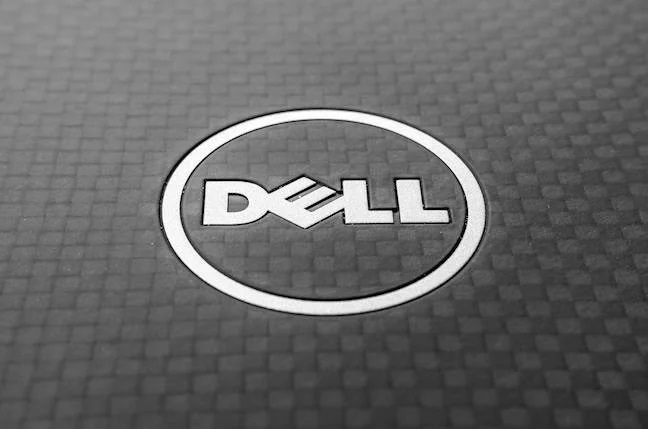It was a tough Q1 of fiscal 2024 for Dell as revenues fell by a fifth on the back of shrinking PC and infrastructure sales.
Turnover for the quarter ended May 5 was $20.92 billion, beating Dell’s guidance, and it recorded a net profit of $578 million, down 46 percent on a year ago.
The Client Solutions Group – PCs – pulled in $12 billion, down 23 percent, representing the fifth straight quarter of declines. The Infrastructure Solutions Group – servers, networking and storage – raked in $7.6 billion, down 18 percent, to end five successive growth quarters. Servers and networking accounted for $3.8 billion of that, down 24 percent. Storage revenues were 11 percent down, also at $3.8 billion.

Co-COO Chuck Whitten said: “We executed well against a challenging economic backdrop. We maintained pricing discipline, reduced operating expenses, and our supply chain continued to perform well after normalizing ahead of competitors.”
Financial summary
- Gross margin: 24 percent of net revenue
- Operating expenses: $3.949 billion, down 7 percent
- Operating cash flow: $1.8 billion
- Cash and investments: $9.2 billion
This is Dell’s seasonally low quarter for storage and it saw soft storage demand, although the PowerStore and PowerFlex products did well. We note that the storage 11 percent revenue fall was less than half the 24 percent server and networking revenue drop, and the 23 percent CSG segment revenue fall. Storage did proportionately much better inside Dell.
In contrast, HPE storage revenues declined three percent in its latest quarter, NetApp’s shrank six percent and Pure five percent. With a wider storage portfolio and many more customers, we can take the view that Dell is more exposed to the overall macroeconomic situation than these competitors.
We should also remind ourselves that Dell says its external storage revenue market share is larger than these other top players combined.
The overall infrastructure environment is challenging for Dell, with Whitten saying: “Customers aren’t outright cancelling digital projects, but they are prioritizing spend and they continue to constrain investments in infrastructure hardware after the burst of pandemic spending the last couple of years.” Servers are challenged in large bids with enterprise customers, while storage demand downturns typically lag server demand: “And after seeing slowdowns in small and medium business in Q4, we saw a slowdown in larger customers in Q1 … we’re clearly seeing a lull in the storage market.”
Dell expects any storage demand improvement occurring after server demand rises.
Generative AI hype
In the earnings call Whitten said: “We are seeing a lot of demand for AI-optimized infrastructure, that’s obviously a very good thing for our business.” Customers are exploring AI in their datacenters and at the edge. Demand for Dell’s XE9680 8-way GPU AI server “has been very good … but we’re also seeing demand across our portfolio.”

Dell sees the pricing environment becoming more aggressive and claims it won’t take deals that lower its profit margins. It is focusing, co-COO Jeff Clarke said, on long-term market share gains in “the advantaged opportunities for us, commercial PCs, workstations, high-end consumer PCs and gaming, and the opportunities that exist in our broad storage portfolio and server business … AI is going to drive demand for our business.”
He cautioned that it was early in the demand cycle, saying “AI-optimized servers are still a very small part of our overall server mix,” and it will take time to influence the overall server business.
Clarke added: “the buzz is on generative AI and large language models. And it’s an incredible opportunity … What customers are trying to do is to figure out how to use their data with their business context to get better business outcomes and greater insight to their customers and to their business … We think the more specific opportunity is around domain-specific and process-specific generative AI, where customers can use their own data.”
Hence the Project Helix announcement: “An opportunity to take enterprise AI at scale, make it easy to deploy, easy to design, easy to put and install, and use pre-trained models, tuned models and be able to drive inference out in the data center and at the edge.”
Whitten said the AI business represents incremental growth and margin dollars. “The ASPs of our AI-optimized servers are a multiple of our normal server average, and we see lots of opportunities to provide services around this infrastructure.”
Outlook
CFO Tom Sweet said: “We expect Q2 revenue to be in the range of $20.2 billion and $21.2 billion, or between down 3 percent and up 1 percent sequentially, with a midpoint of $20.7 billion.” That would be a 21.7 percent year-on-year fall at the midpoint. Within that: “We expect CSG Revenue to be roughly flat sequentially and ISG down in the low single digits sequentially.”
The full fiscal 2024 outlook is for revenues to be down between 12 percent and 18 percent, down 15 percent at the midpoint, which implies a return to sequential growth in the second half of the year. Dell said that while there is near-term uncertainty, it has a strong conviction in the growth of its TAM over the long term. Short-term pain should lead, it hopes, to long-term gain.








